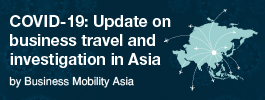Standard Chartered’s Sheth: Impact investment is now gaining steam

As the bank positions itself at the forefront of sustainable investing with a new $75 billion pledge, Rahul Sheth, Standard Chartered executive director of debt capital markets, predicts impact and sustainable investing will experience large growth in the medium term.
Standard Chartered Bank, one of the largest infrastructure financing and sustainable financing banks in the world, has had this strategic vision since 2016 – to implement its ambitious drive of incorporating sustainability into both its investment strategies as well as into the culture of the group.
In 2018, it released its “sustainability philosophy”, setting out how it will integrate sustainability into organisational decision-making through its green and sustainable product framework, which determines the underlying eligible, qualifying themes and investment activities mapped against the relevant sustainable development goals (SDGs). And though stakeholder capitalism and sustainability were the overarching theme for the World Economic Forum in Davos, many banks are still not doing the heavy lifting and matching their “talk” with commensurate action.
Driven from the top by CEO Bill Winters and the board, the strategy fits well with Standard Chartered’s geographical footprint in key global wealth centres and emerging and developing countries. Sourcing capital and deploying it in emerging markets through sustainable mechanisms allows investors to put their capital to work productively at a tolerable risk to help meet the funding gap across emerging economies.
Putting talk on paper – sustainability aspirations
The bank’s sustainability aspirations framework maps out stated quantifiable sustainable goals against progress made. The group also states it will decline transactions or exit relationships where clients show insufficient intent or progress to meeting the standards set.
With 90.9% of aspirations achieved or on track in 2018 – up from 88.6% in 2017 according to the group’s key performance indicator, the group announced in February 2020 new business targets for supporting its clients as they transition to a low carbon economy.
By the end of 2024, the bank commits to providing $40 billion of project financing services for infrastructure that promotes sustainable development and $35 billion of project financing services, merger and acquisition advisory and debt structuring services for renewables and clean tech projects (solar and wind).
The lender also intends to reduce its emissions across its global properties by 2030 and has updated its coal policy, meaning it will be ceasing support to clients who generate more than 10% of earnings from thermal coal.
With a new green and sustainable product framework launched in 2019 in partnership with Sustainalytics, a sustainable consultancy and ratings service provider, the framework sets out underlying eligible qualifying themes and activities for new products that are consistent with the framework and explicitly mapped against the relevant SDGs
New sustainable product lines
With a large presence in emerging markets, the bank has traditionally offered sustainable investment products across the spectrum of capital markets, equities, fixed income, funds and private equity by relying on an open architecture platform for its wealth managers. Last year, however, it went further by developing and launching its own sustainable product lines including deposit and bond as well as acting as a placement agent for Impact Investment Exchange’s (IIX) Women’s Livelihood Bond 2 (WLB2).
Its $540 million (EUR 500 million)-priced sustainability bond issued in June 2019, with the bank acting as sole sustainability structuring advisor and joint lead manager on the transaction, was six times over-subscribed.
“Investors are especially interested in the bond as it has the risk features of a UK regulated security but provides exposure to emerging markets, including some of the least developed countries” said Rahul Sheth, executive director of debt capital markets at Standard Chartered.
“Sustainalytics issued a pre-issuance verification report providing the assets to which the bond would be allocated,” added Sheth.
According to “Opportunity 2030: The Standard Chartered SDG Investment Map” — the recent study released by Standard Chartered — there is an almost $10 trillion opportunity for private-sector investors across all emerging markets to help achieve the United Nation’s SDGs.
“With our footprint in emerging markets, we can make a difference through additionality by focusing on SDGs 7, 8, and 9,” noted Sheth.
The allocation will be split with 25% on renewables and 75% on social projects in line with the International Finance Corporation (IFC) and ICMA’s social bond principles and will improve access to funding for developing and emerging countries, according to Sheth.
It will have a yearly allocation report in terms of how the funds are deployed and transparency, and the impact will be reported according to the framework.
In May 2019, Standard Chartered launched the World’s first sustainable deposit.
“Both the deposit and the bond operate through the sustainable product framework, so have a similar governance framework. It is available to institutional and retail clients in select markets and is tracking at a billion dollars currently,” revealed Sheth.
Supporting women’s livelihoods
At the start of this year, IIX successfully closed its $12 million four-year tenor 4% per annum coupon Women’s Livelihood Bond 2 in January, with the added support of Standard Chartered as a placement agent.
The bond series is the world’s first impact investing instrument to be listed on a stock exchange and Asia’s first multi-country listed gender bond, reporting both social and financial returns.
“Finding the investors for a bond which is not very liquid or rated was a good platform for discussions, with ‘impact’ the key selling point. We played a major role in sourcing in the orders outside of IIX’s own network, such as with US institutional investor Nuveen. We also used private banking channels such as ultra-high net-worth individuals (UHNWIs) and family office foundations with a focus on impact,” outlined Sheth.
Although the scalability potential for this structure was cited as a key feature of the $150 million bond series, the second issuance was only $4 million larger than the first $8 million in 2017.
“Impact investment is now gaining steam” added Sheth, “I see large growth potential over the medium-term. Conversations with clients about impact investing have shot up and a lot of investors are trying to align their portfolios.”
The WLB2 is the first International Capital Market Association and ASEAN Capital Markets certified social bond focused on women’s empowerment.
“We have offered a host of training activities and services both internally and to clients on sustainable and impact investing opportunities,” shared Sheth. “After the launch of Women’s Livelihood Bond 2, and the publicity it gained, it garnered a lot more interest from new pockets of liquidity.”
These activities, add to a host of sustainability initiatives and products already in place at the private banking arm ranging from sustainability reports, country impact reports, tailored private banking services for clients to develop their impact portfolios based on their aims and ambitions, as well as philanthropy and impact surveys across key wealth centres.
With a presence in key global cities such as London, Hong Kong, and Singapore, the private banking arm has also been proactive in listening and developing systems for their wealth managers to help guide interested clients towards sustainable investments and philanthropy.
These include ‘Impact Philosophy’ for HNWIs which guides them through a four-step process (developed with the Asian Philanthropy Network) to determine the impact profile of clients, and to provide a practical methodology to identify and map solutions, including sustainable and impact investing solutions.
It’s ‘Impact Circle’ series brings together client’s asset owners and key players so that they can connect and exchange ideas in addition to surveys and research on impact investing and philanthropy motivations of high and ultra-high net worth individuals.












Leave your Comments